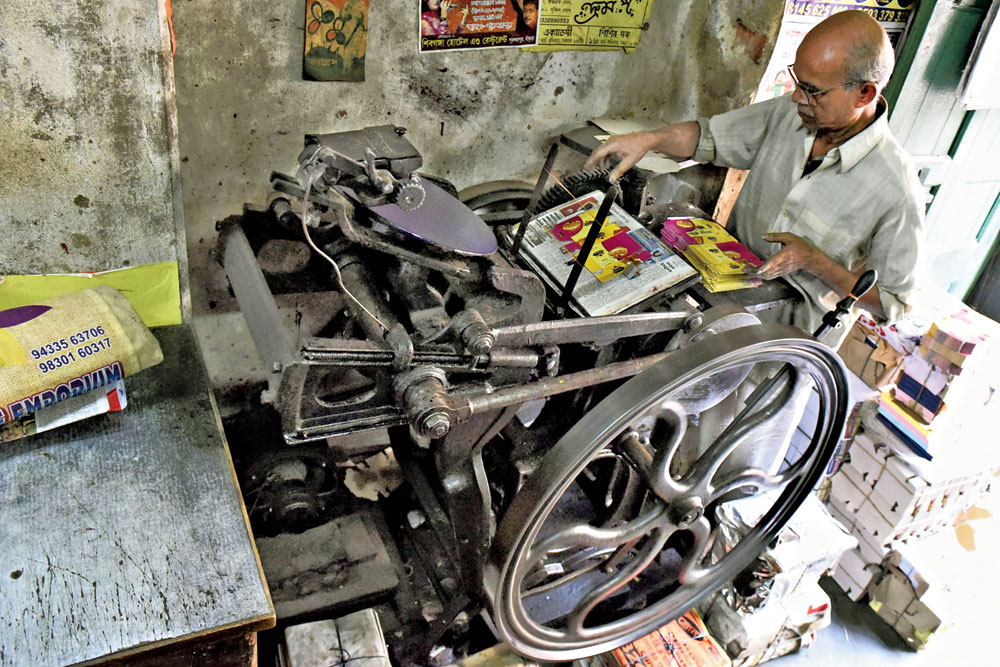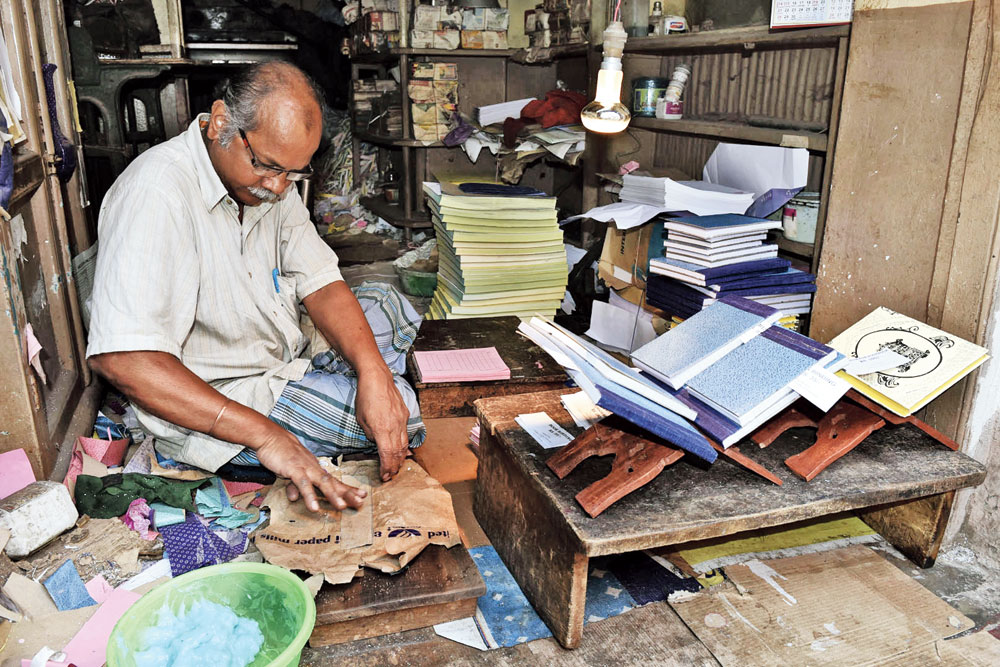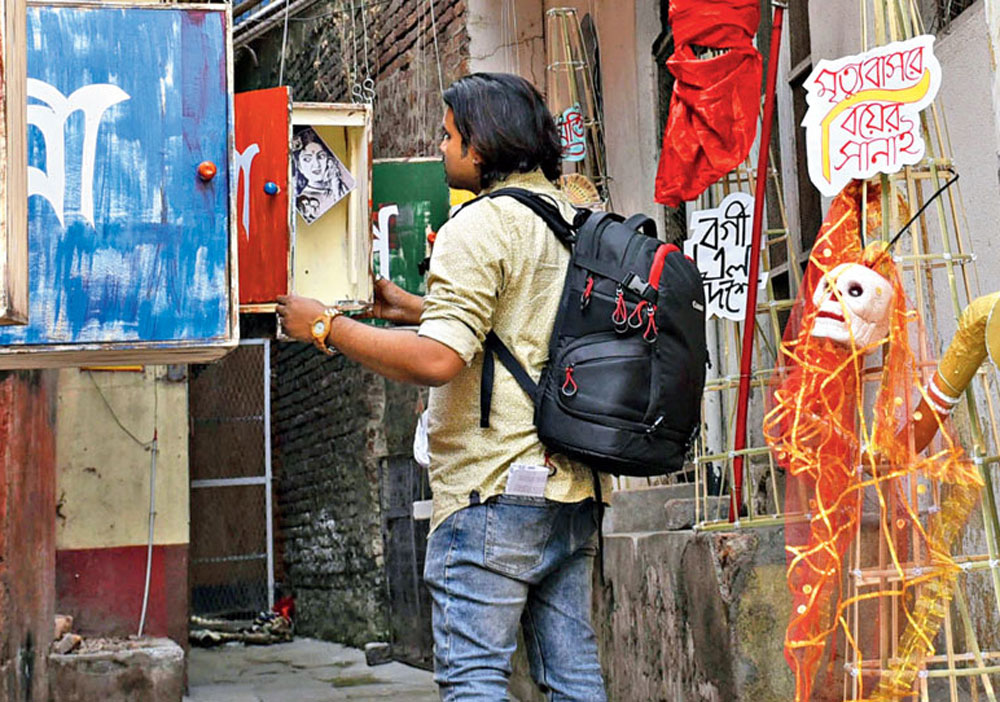He is a jatra connoisseur who has spent al¬most his entire life in this north Calcutta neighbour¬hood famous for its cultural traditions.
The 64 year old’s stories of memorable performances and interactions with actors were a source of inspiration for a group of artistes as they worked for nearly two weeks on a jatra themed installation in Umesh Dutta Lane of Bead¬on Street.
The heritage of Chitpur —its jatra, printing presses, bookbinding shops and jewellery stores — got a new lease of life as 50 artistes and community members of Chitpur Craft Collective presented an art trail, Chitpurer Chalchitra, on Thursday as part of the Kolkata Festival, held in association with t2.
Art installations and stories tumbled out of various shops and street corners all over Chitpur with a digital guide showing visitors the way.
“There are no guides for this trail. It’s the people of Chitpur who will help out the visitors with directions. We want to make this a sustain¬able, long term project with the help of residents,” Sumona Chakravarty of Hamdasti, a curator of the festival, said at the start of the art trail at Min¬erva Theatre.
“Even after the exhibition, the store owners and residents can conduct heritage tours in Chitpur,” Chakravarty said.
“Jatra was an integral part of our lives here once. People would wait for winter and book seats months in advance,” the 64yearold jatra connoisseur, a jeweller by profession, said.
“We would remember the dialogues and often enjoy adda over tea with the actors. All changed with the advent of television,” he said as he watched visitors reliving his childhood through art in his alley.
Conceptualised by Arts forward, Jatra Japon traced the performance art’s journey from the 1960s through installations, posters and interesting titles.
The Chitpur art trail consisted of 18 stops that included a glimpse of the Urdu culture through calligraphy, poetry and artwork at Chaitanya Library.
A workshop on Urdu calligraphy organised by the Art Rickshaw and Sirri Saqti Foundation will be held in the library on Saturday.
“The Urdu culture of the Nakhoda mosque area is as much part of Chitpur as the Bengali traditions,” Devanshi Rungta of Art Rickshaw, a co curator, said.
Art installations have paid tribute to the bamboo and cane craftsmen living here as well as to the centuryold bookstores and stencil and stampmaking shops.
“I would earn around Rs 20,000 a month once. Now, I hardly get any order,” Panchanan Boral of a bookbinding shop off Rabindra Sarani, the ninth stop of the art trail, said. “But bookbinding is the only trade I know and I don’t want to close down the shop.”
Cross the road and a range of printing blocks, some more than 100 years old, are on dis¬play at 69 year old Baidyanath Ash’s shop. Visitors can make bookmarks, helped by artist Nilanjan Das, out of the printing block designs.
“Our letterpress machine is obsolete. It is used to print small sweet boxes now,” Amit Sil, the owner of the vintage Annapurna Printing Press, said. “We have two offset printing machines, but we are keeping this letterpress for its antique value. This machine is 130 years old.”
The machine was shipped from Ohio, Cleveland, for Sil’s grandfather. Another heritage venue of the area, Diamond library, has paperbacks from early 1900 on display.
There was more art and storytelling at Granhata Lane, the gold and silver jewellery hub. Visitors got to make their own sandesh at Makhanlal Das and Sons, which has been around since the 1830s.
The art trail is on till Saturday, from 2pm to 8pm.

A 130 year old letterpress machine at Annapurna printing press Picture by Sanat Kr Sinha

Panchanan Boral shows us how book binding is done Picture by Sanat Kr Sinha










